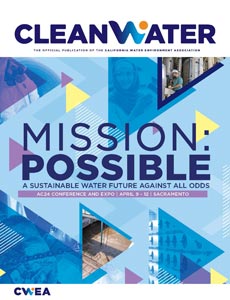Technical Session Proposal
Emerging Challenges and Opportunities
Diversifying Biosolids Management with Thermal Drying
Friday, April 12, 2024
10:10 AM - 11:00 AM
Location: A9-A11
- AT
Anthony Tartaglione
Senior Assiocate
Hazen and Sawyer
King City, OR 
Kaylen Prior
Chief Chemist
Incline Village General Improvement District
Incline Village, NV
Lead Presenter(s)
Track Lead(s)
Presentation Description: In California WRRFs are facing uncertainty with their current land application programs related to anticipated PFAS regulations. In addition, with the diversion of organics from landfills by SB 1383 the main strategy is co-digestion followed by composting to produce a Class A biosolids for beneficial use. However, with the emerging challenges related to PFAS, the composting part of this strategy may be impacted as it does not provide any PFAS treatment. On the other hand, drying produces Class A biosolids and is required upstream of advanced thermal processes for PFAS treatment including pyrolysis and gasification. Drying the dewatered digestate rather than composting provides an opportunity to limit the impacts of anticipated PFAS biosolids regulations.
This presentation will cover three thermal drying case studies that will benefit utility managers, operation and maintenance practitioners, and engineers by providing:
• a highlight of the thermal drying sizing, technology selection, and dried product characteristics,
• system integration with existing WRRFs including sludge conditioning,
• the lessons learned including equipment procurement, staffing, and challenges in operation from previous thermal drying designs., and
• integration insights for future pyrolysis/gasification PFAS treatment.
This presentation will cover three thermal drying case studies that will benefit utility managers, operation and maintenance practitioners, and engineers by providing:
• a highlight of the thermal drying sizing, technology selection, and dried product characteristics,
• system integration with existing WRRFs including sludge conditioning,
• the lessons learned including equipment procurement, staffing, and challenges in operation from previous thermal drying designs., and
• integration insights for future pyrolysis/gasification PFAS treatment.
Learning Objectives:
- Conduct thermal drying sizing, technology selection, and describe the dried product characteristics.
- Understand system integration with existing and future solids treatment.
- Define project delivery and operations based upon lessons learned from thermal drying case studies.

